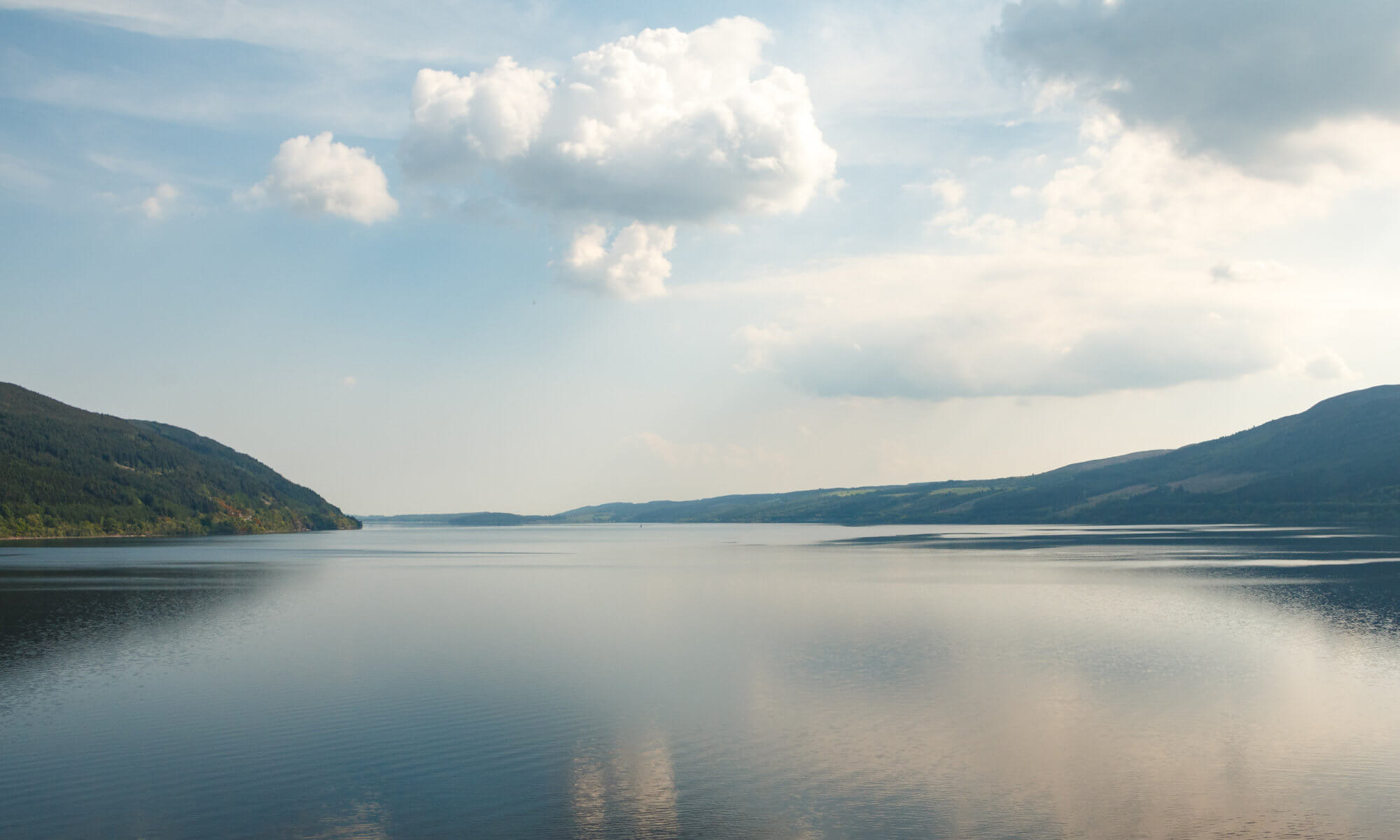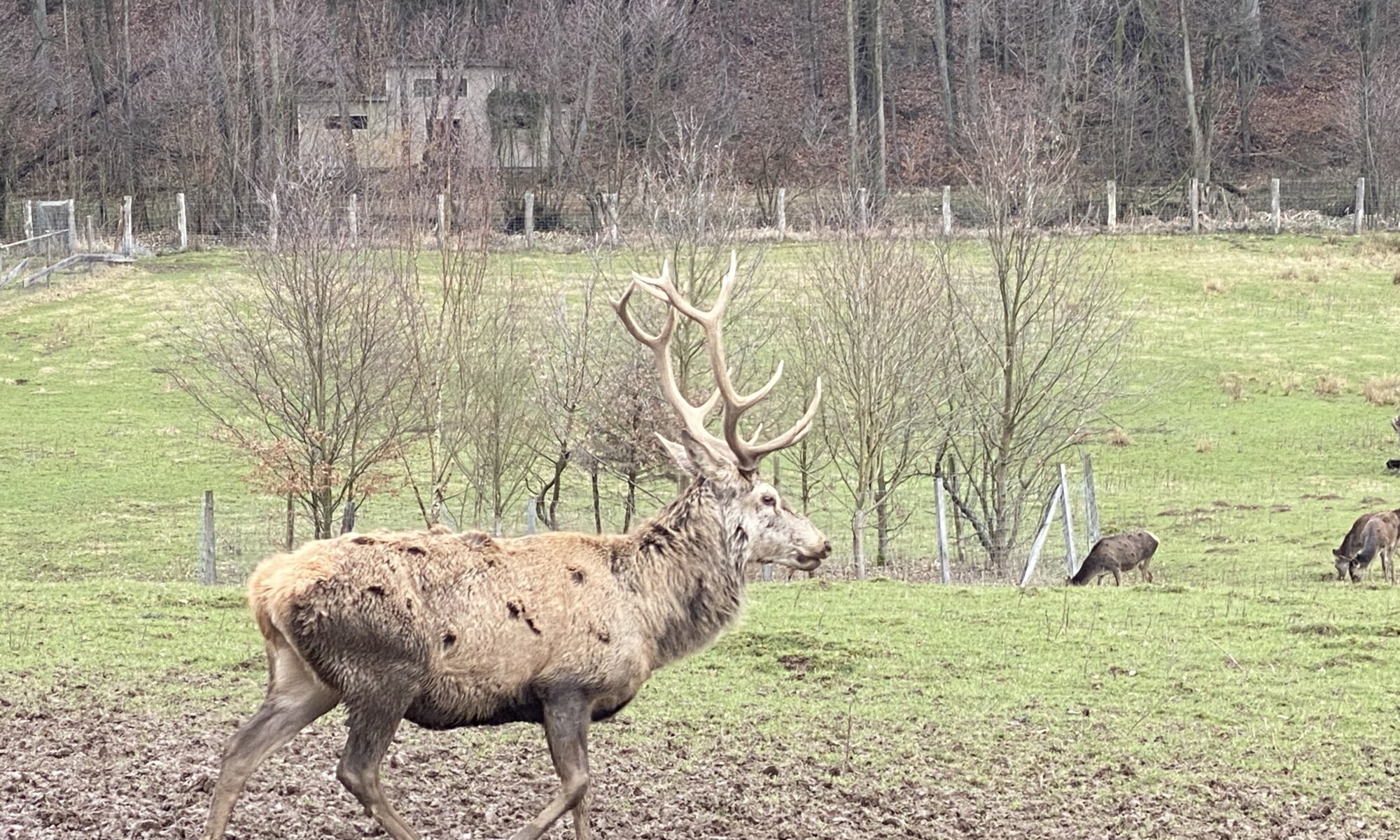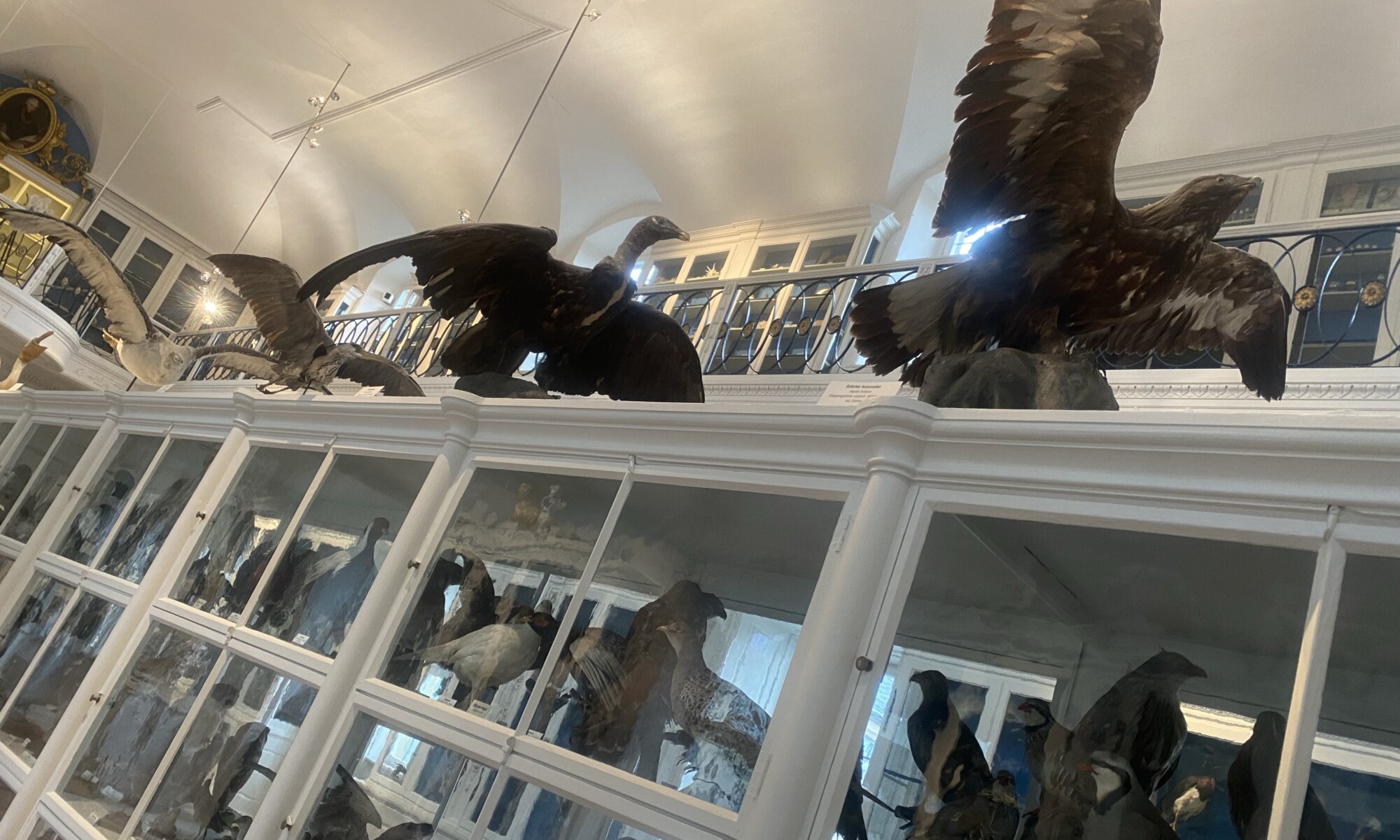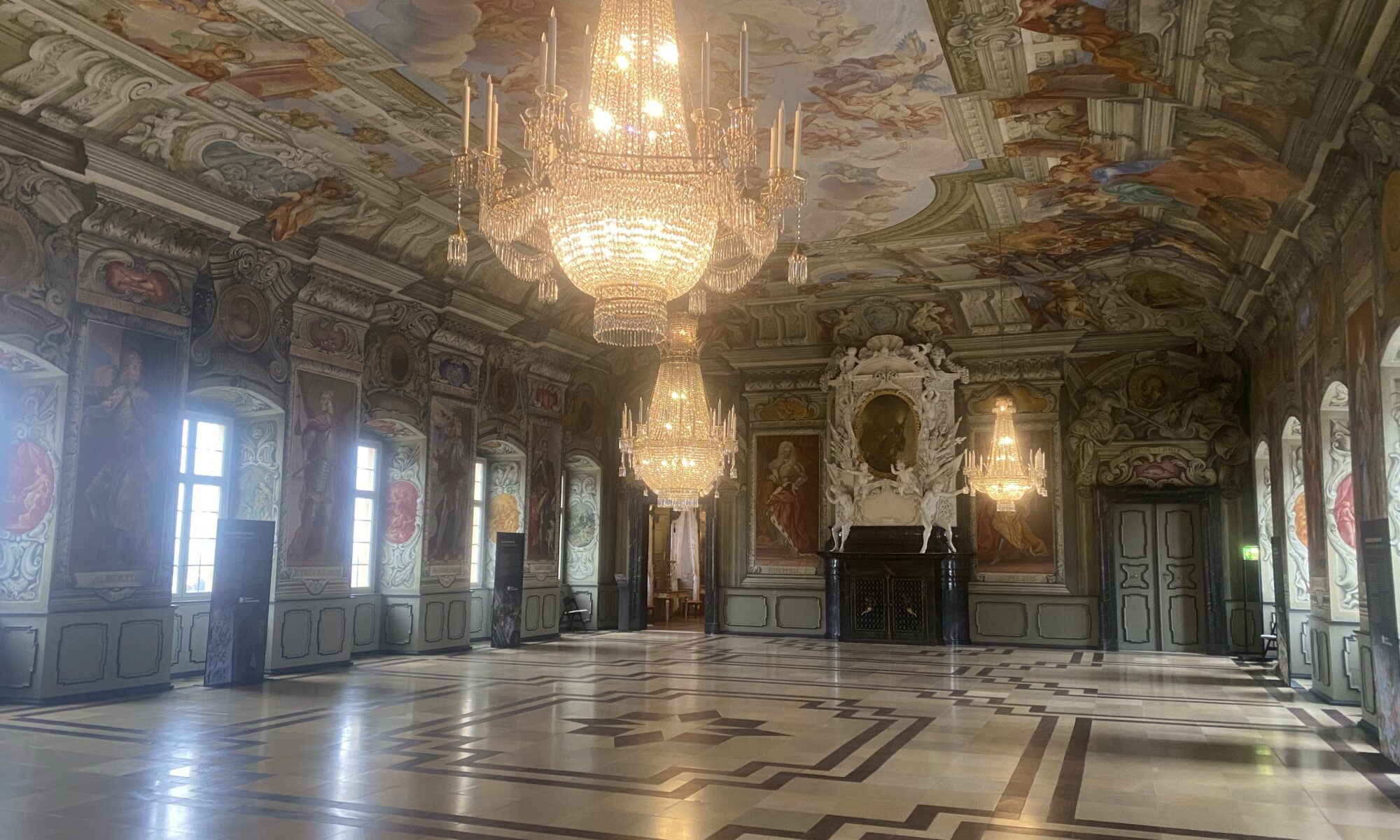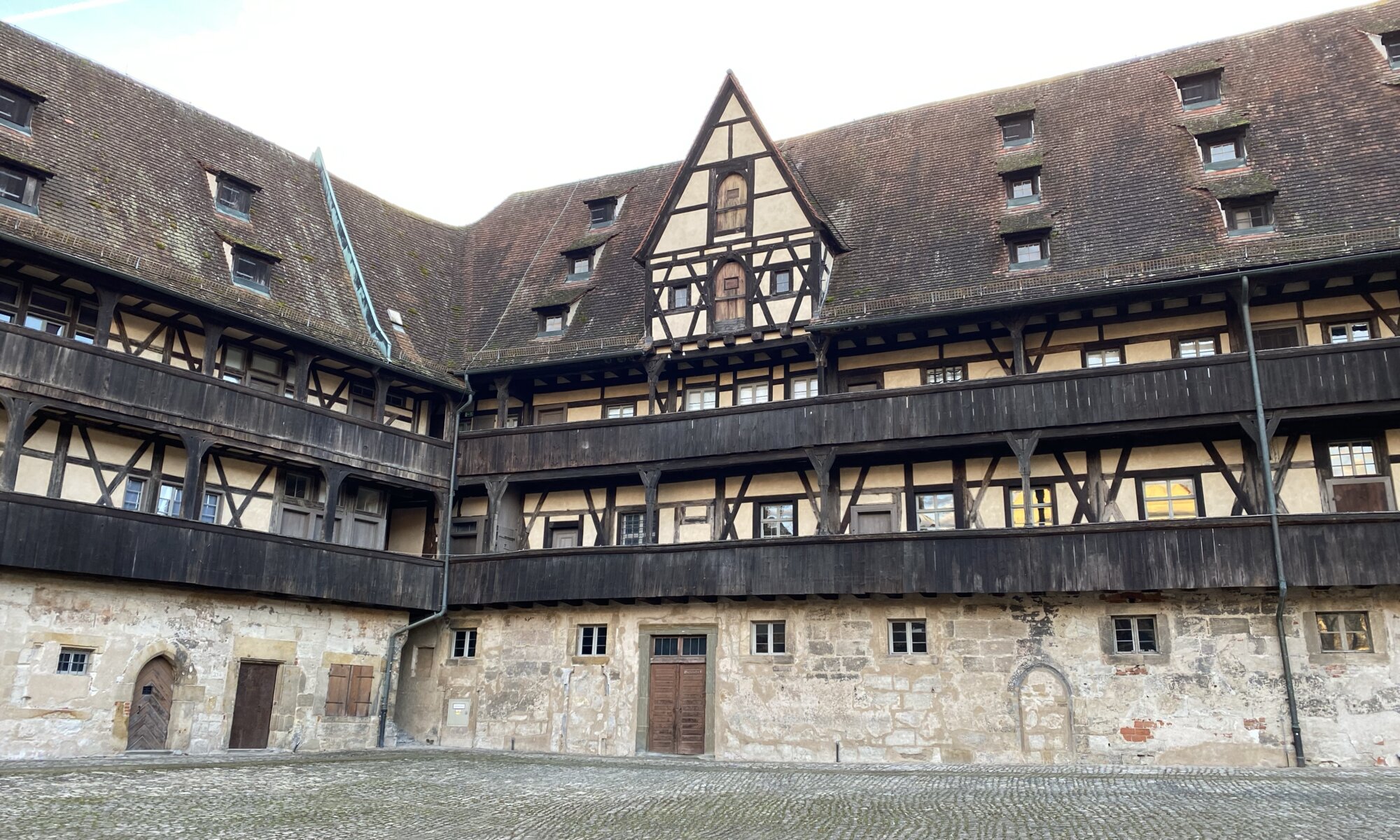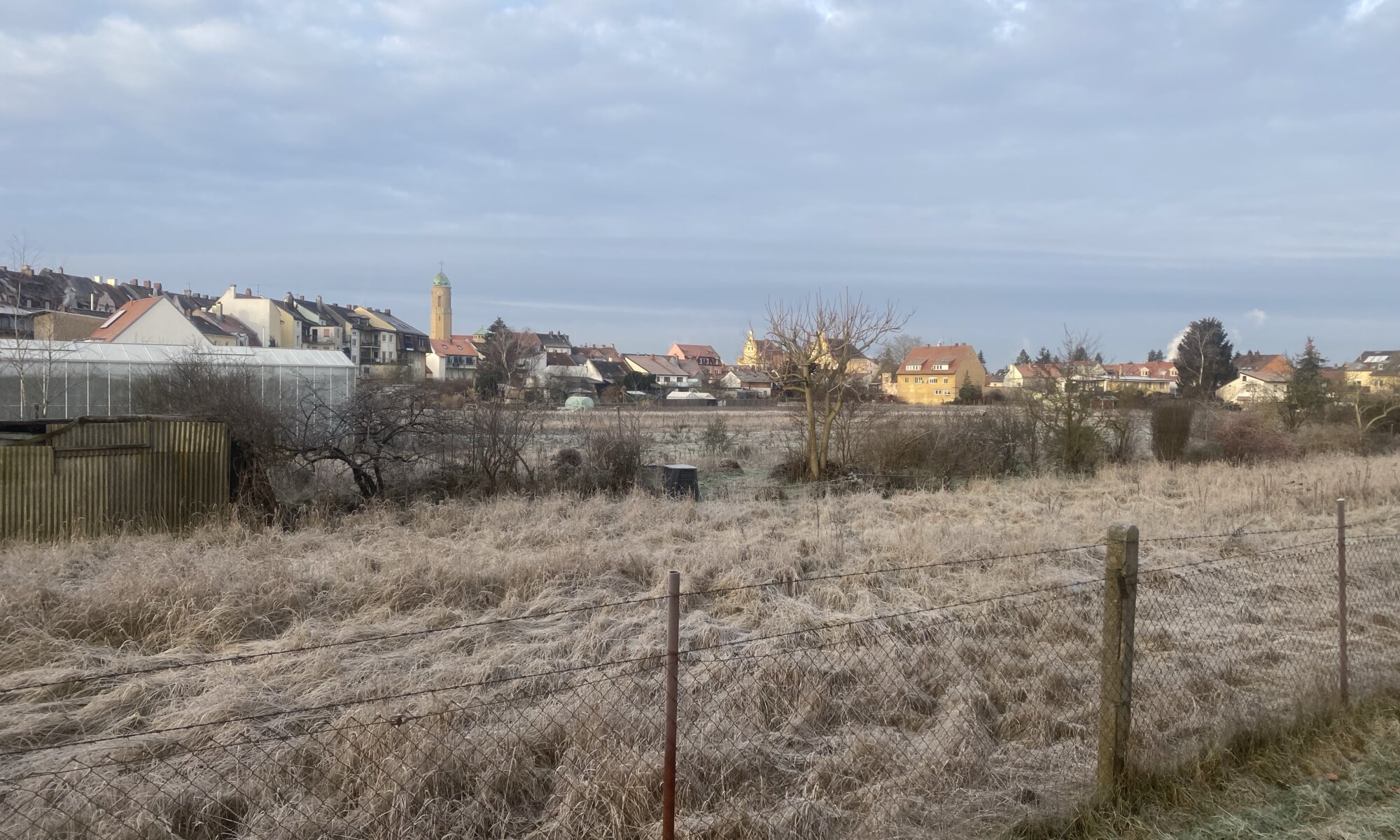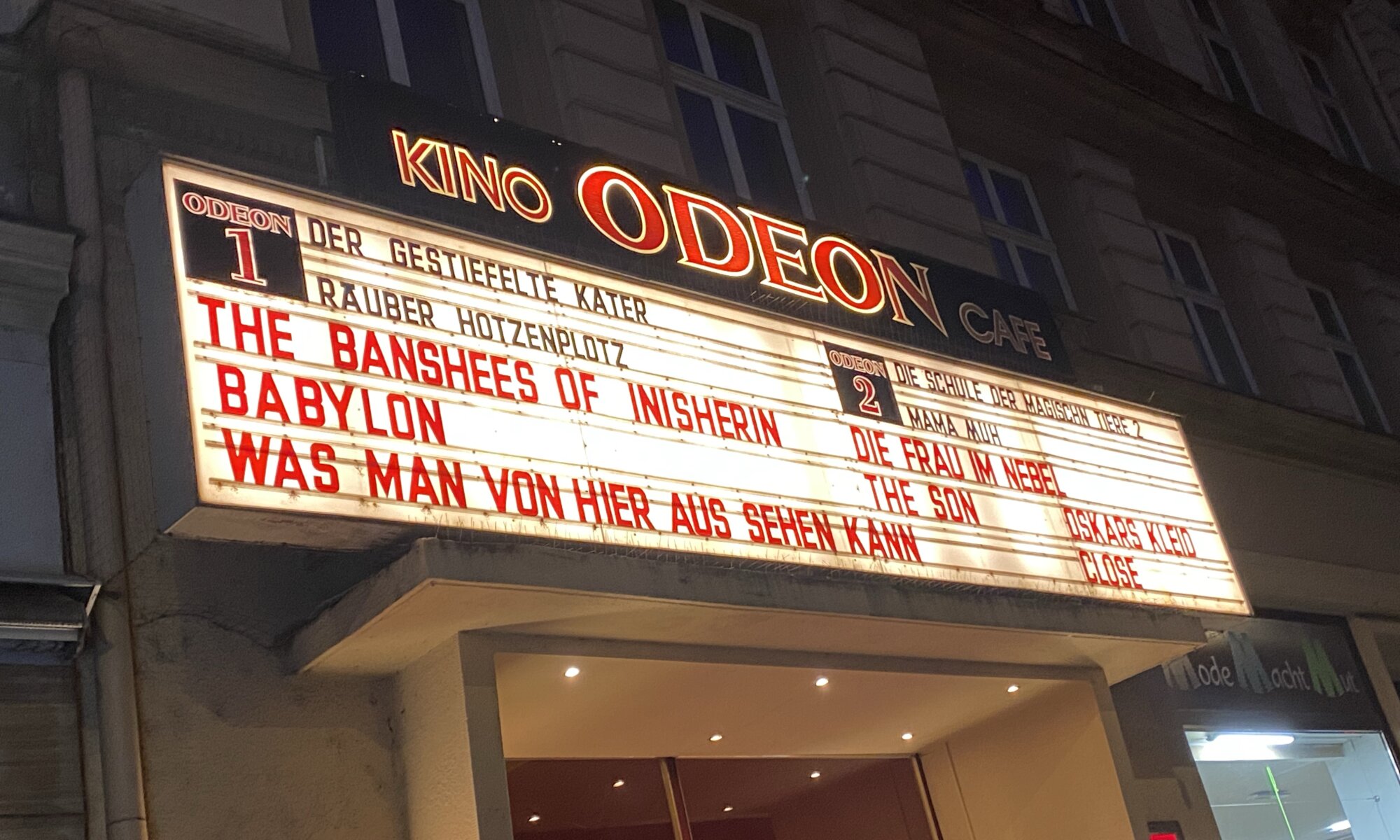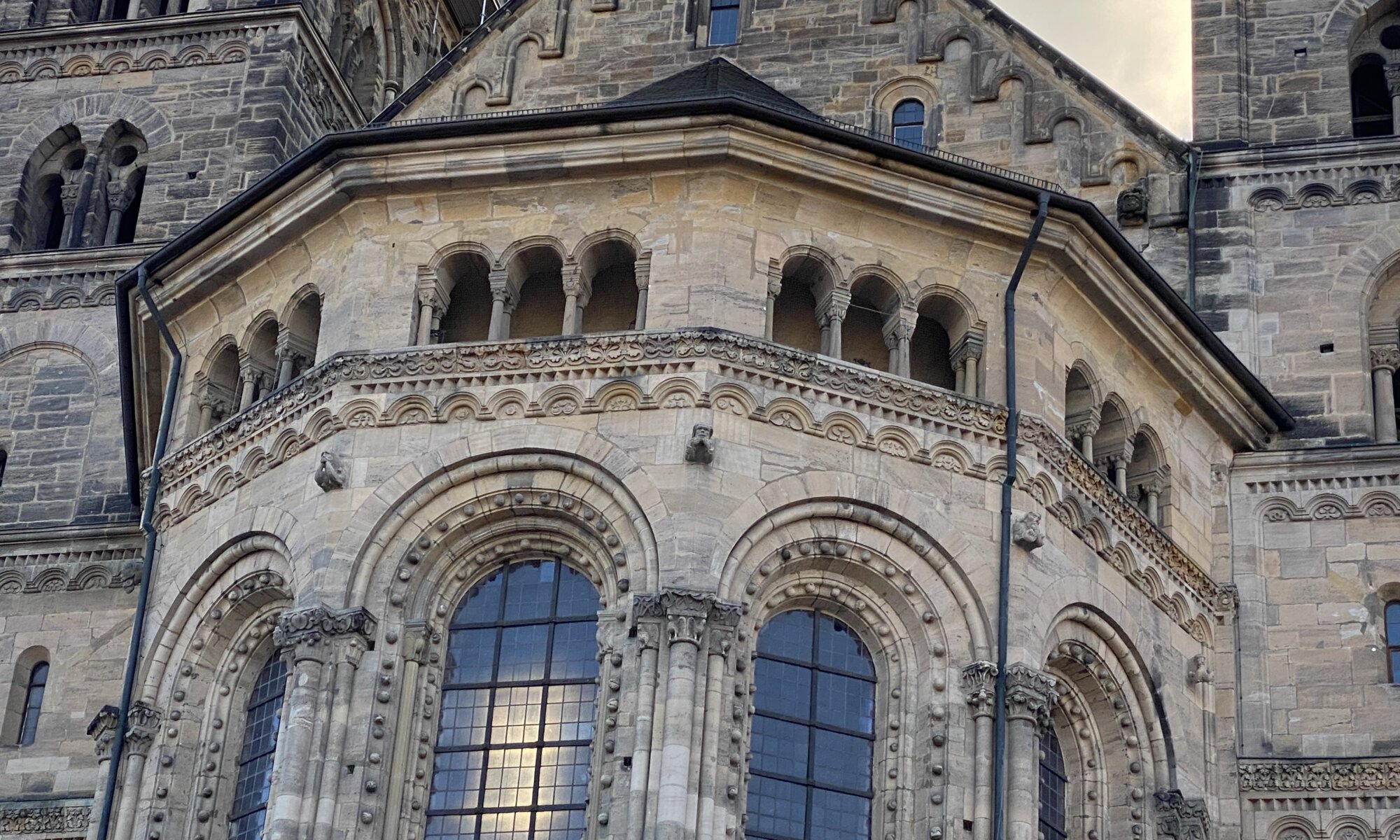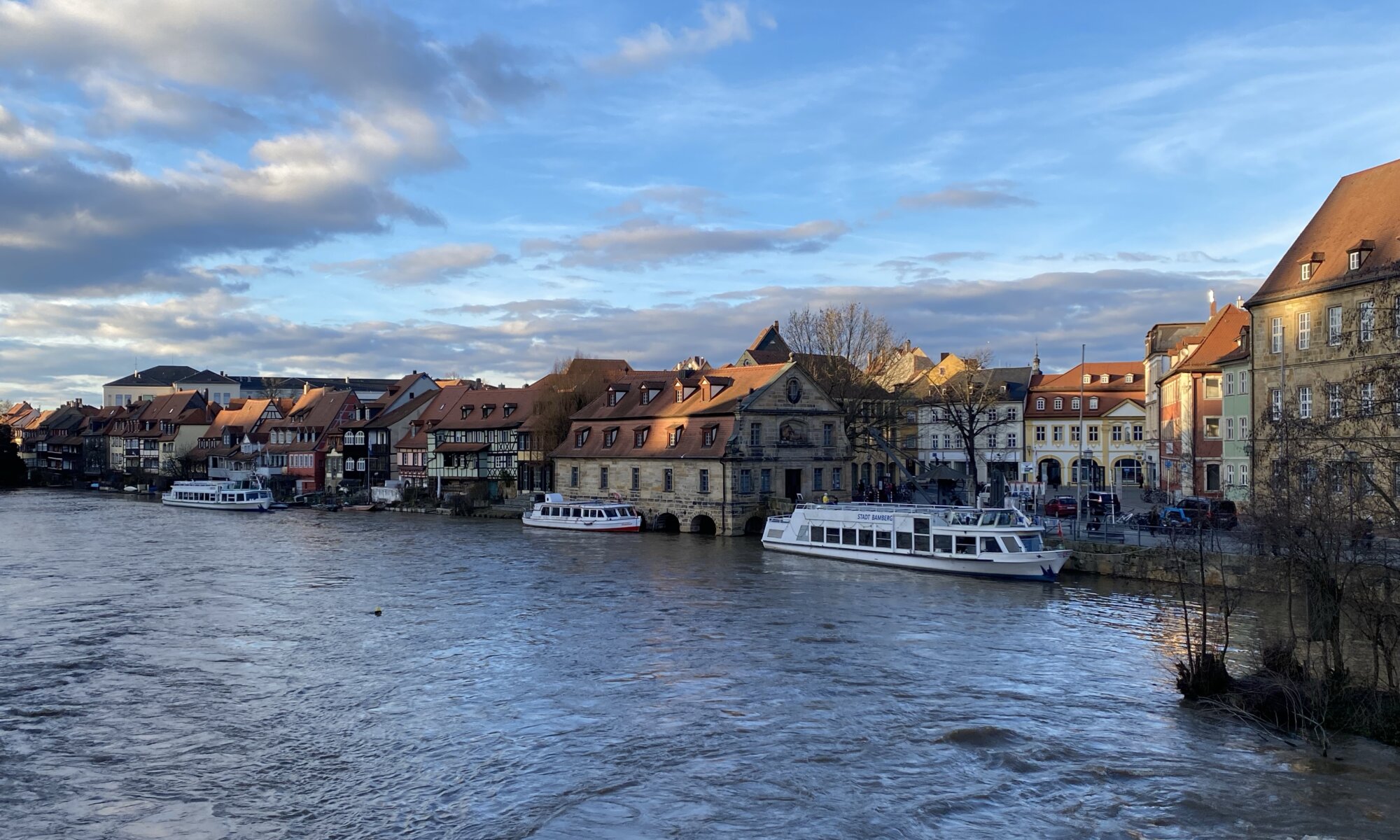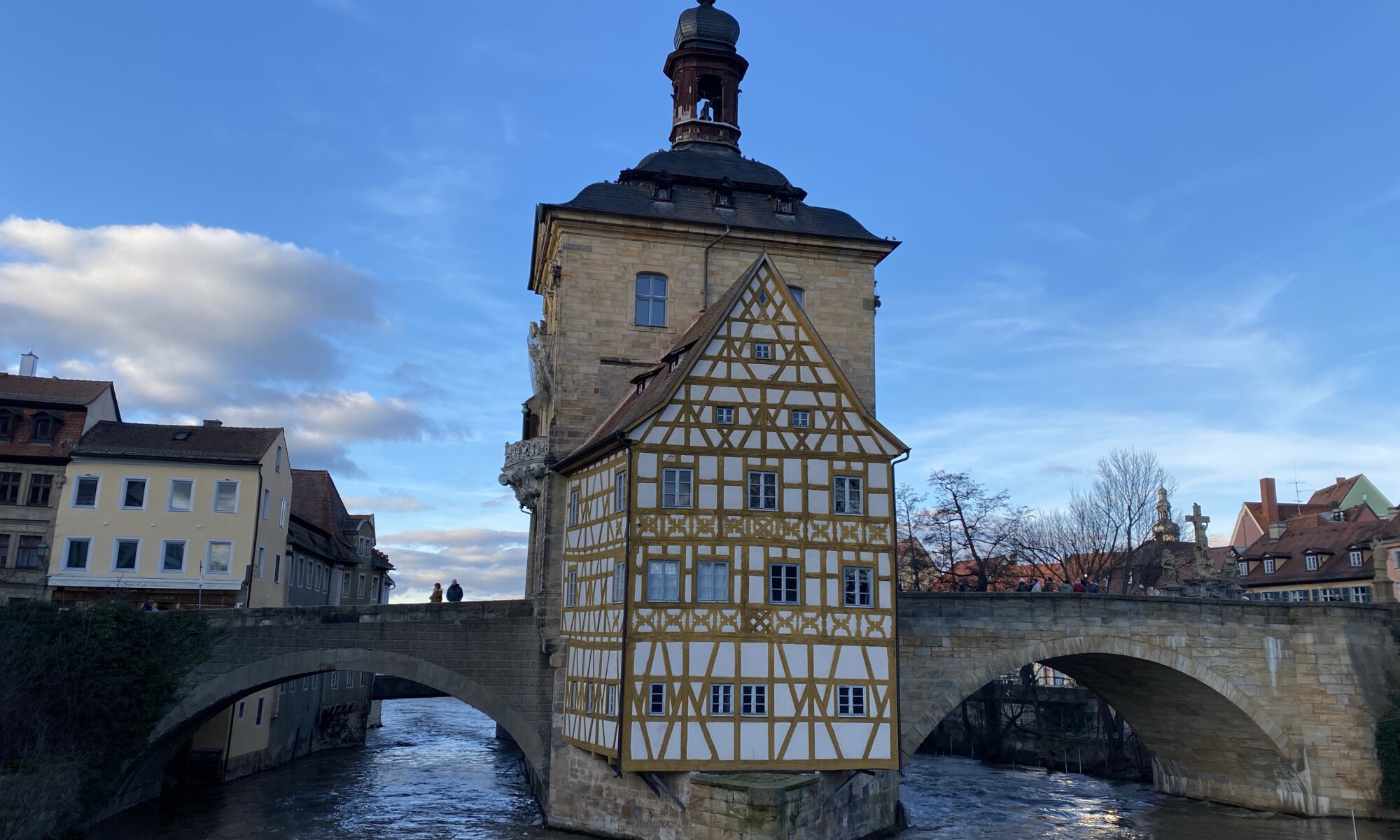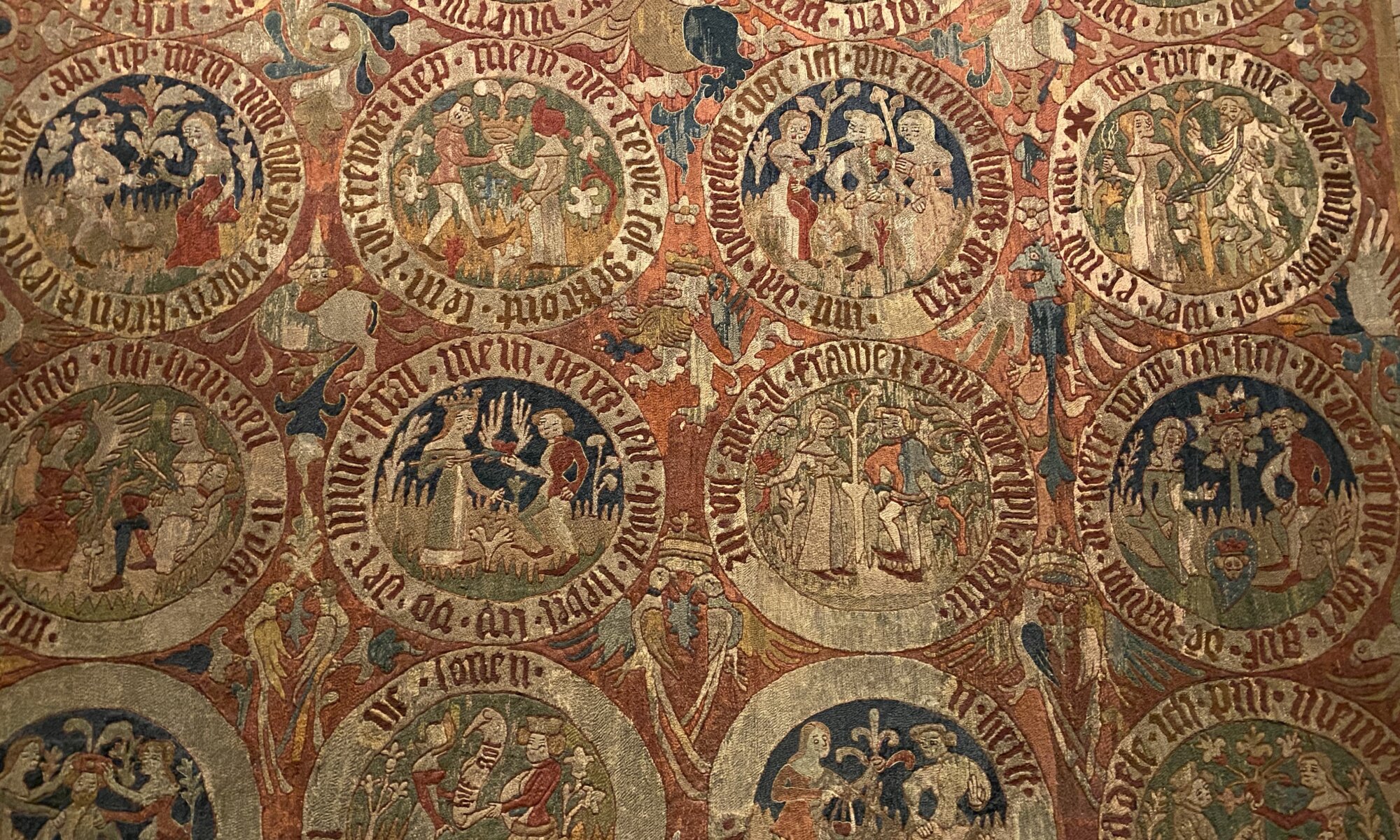When you’re at Göttingen and want to see some animals, you don’t have too many options: the next zoological gardens are at Hannover and Frankfurt and the city just has the Kehr with some deer, wild boars and squirrels. A good option is the amazing Tierpark Sababurg at Hofgeismar, belonging to Hesse. But there is also an underrated option not far away: the Wildpark Hardegsen. It is owned by the small city of Hardegsen (7,500 inhabitants) and you don’t have to pay an entrance fee.
Continue reading “One hundred forty steps”Naturkundemuseum
Bad weather at Bamberg? Don’t worry! The city has a good natural history museum with one of the most beautiful ancient presentation rooms (the Vogelsaal) I’ve ever seen. This special room once belonging to the university was finished in 1810 and is still in its original state. It was formerly used to teach biology and hosts are large collection of birds.
Continue reading “Naturkundemuseum”Neue Residenz
The Neue Residenz is an impressive ancient building close to the cathedral of Bamberg. It was the residence of the bishops from 1604 on and replaced the Alte Hofhaltung on the opposite side of the street in this function. The building consists of two sections, one in Renaissance and one in Baroque style. From 1803 on the Neue Residenz became a home of the Bavarian kings when Bavaria expropriated church property on a large scale.
Continue reading “Neue Residenz”Alte Hofhaltung
Next to the cathedral of Bamberg you can find the Alte Hofhaltung, the residence of the bishops. It was built in the 15th century CE but the area was used by rulers much longer than that: the direct predecessor was an imperial palace (a so called Kaiserpfalz) built by Henry II, Holy Roman Emperor. Today it is a beautiful, quiet place and you can relax in its inner courtyard.
Continue reading “Alte Hofhaltung”Gärtnerstadt
The city center of Bamberg is a UNESCO world heritage site since 1993. And that is well-deserved because of the beautiful historic buildings in the old town (Bergstadt and Inselstadt) and the location along river Regnitz. After a short walk through the streets and over the many bridges you can only confirm this. But there is another part that belongs to the UNESCO world heritage site that is lesser known: the Gärtnerstadt.
Continue reading “Gärtnerstadt”Odeon
Normally, when a multiplex cinema opens in a German city tough times start for the old, small arthouse cinemas. In Bamberg this is different: the multiplex cinema went into bankruptcy and the small cinemas survived. One of them is the Odeon not far from the main railway station. It is charming small cinema and watching a movie there is like travelling in time.
Continue reading “Odeon”Bamberger Dom
You can’t overlook the cathedral of Bamberg with its two high towers. It is part of the Bergstadt city quarter and located on a mountain next to river Regnitz. The Bamberger Dom named St. Peter und St. Georg is special, not only because of its Romanesque style. It is the only burial site of a pope in Germany and north of the Alps. While popes are typically buried at Roma, pope Clement II – who was formerly bishop of Bamberg – was buried within this cathedral.
Continue reading “Bamberger Dom”Little Venice
The city of Bamberg is beautifully located at the 64 km long river Regnitz, created from the confluence of Pegnitz and Rednitz near Fürth and running into river Main. At Bamberg two river arms form an island which contains important parts of the city and water mills were used in different parts. The river was also important to transport goods, as you can still today see at the harbor with an ancient crane.
Continue reading “Little Venice”Surrounded by water
What is the most important icon of Bamberg? There is only one correct answer: it is the old town hall building (Altes Rathaus) built on posts within the river Regnitz. Not only tourist books use this place is the one and only image of the city – also companies showing their connection to Bamberg use it massively. The impressive building is partly half-timbered and marks the border between the religiously ruled (Bergstadt) part of the city and the secular Bamberg (Inselstadt).
Continue reading “Surrounded by water”More than Roman history
The city of Regensburg has written proof when it was founded: in the year 179 CE the Roman fortification Castra Regina was built. This is stated on a stone which was part of the Porta Praetoria which is partially still standing today. It says ‘Emperor Caesar Marcus Aurelius Antoninus Augustus (…) had a fortification with gates and towers built for the 3rd Italian Legion (…)‘ and can be found in the Historisches Museum at the Dachauplatz.
Continue reading “More than Roman history”